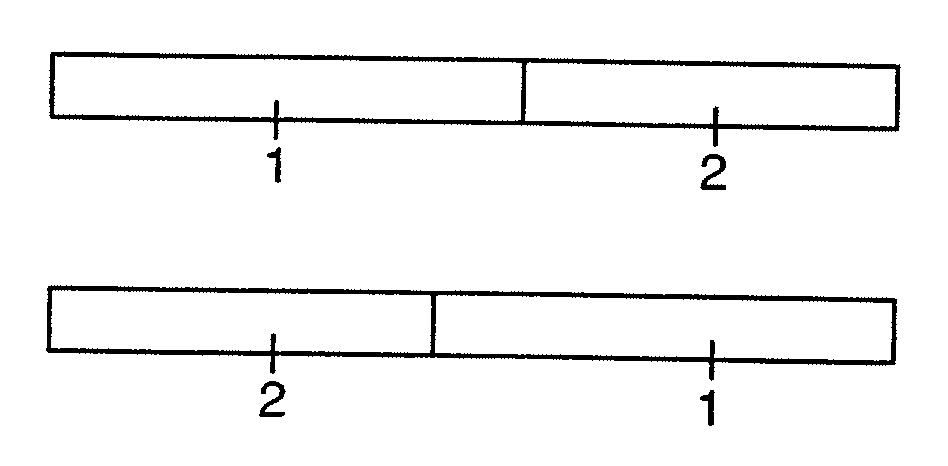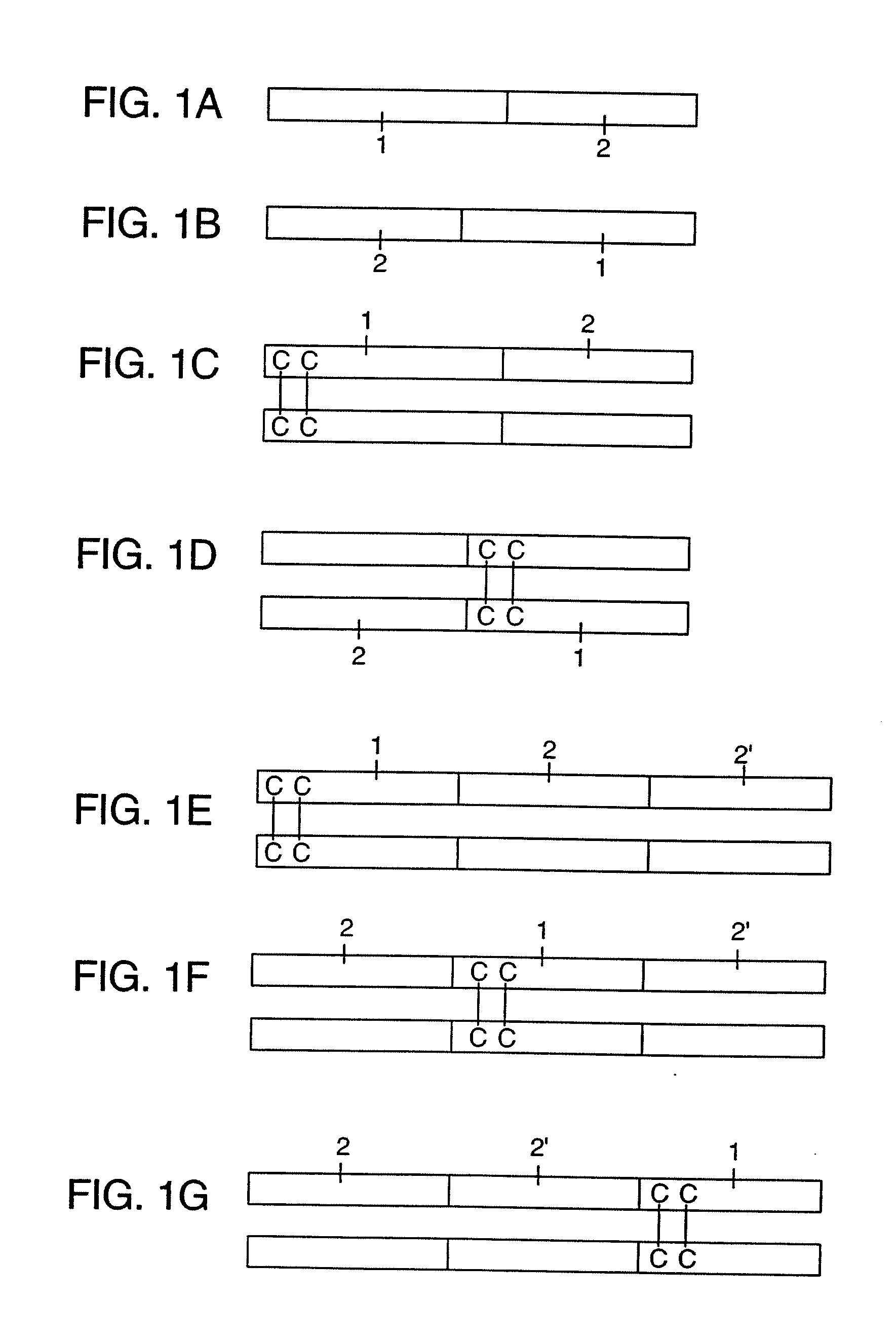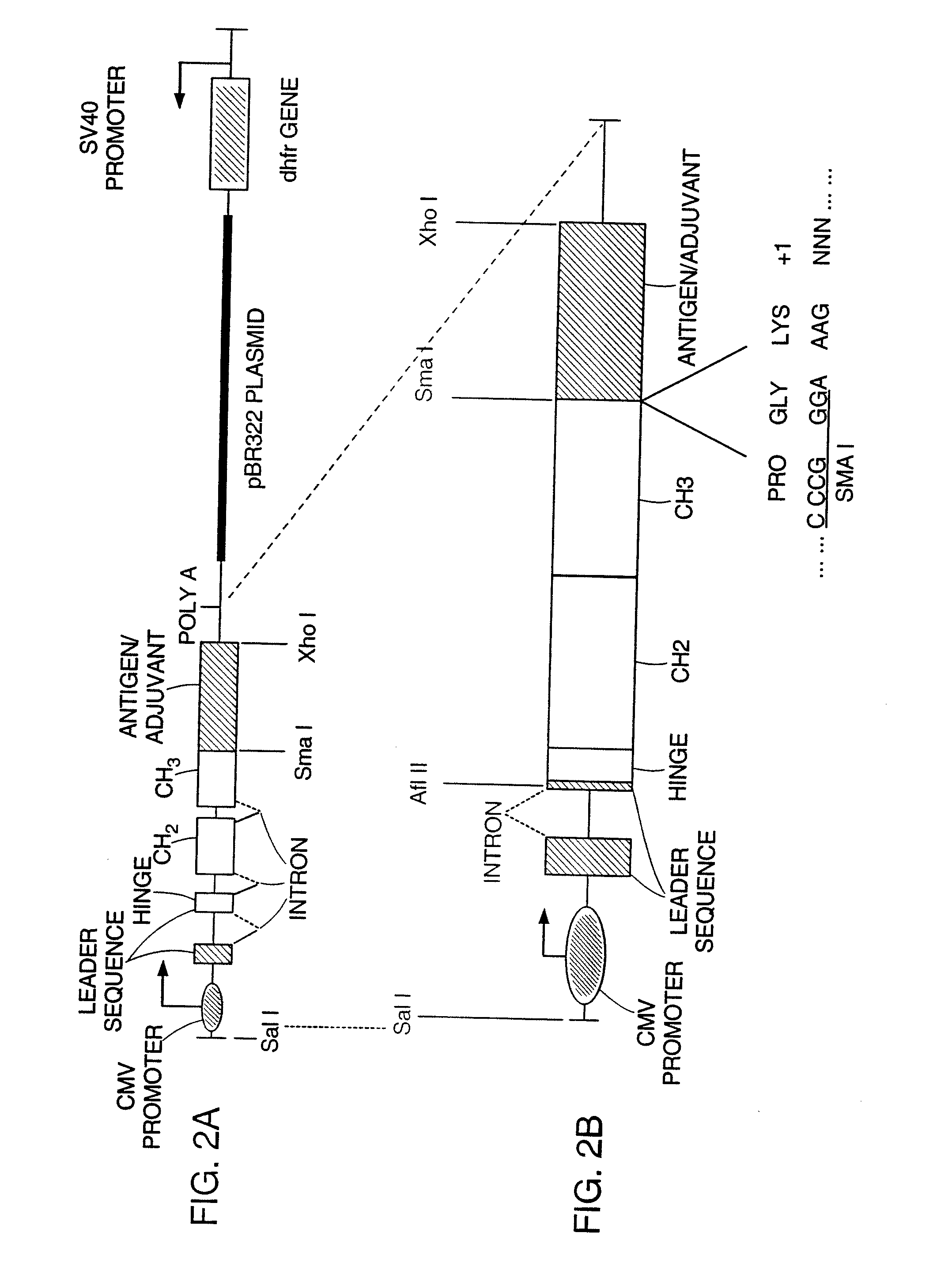Methods of using Fc-Cytokine fusion proteins
a fusion protein and cytokine technology, applied in the field of methods and compositions for enhancing the immunogenicity of preselected proteins or peptide antigens in mammals, can solve the problems of messenger destruction along with the message, the immunogenicity of the antigen delivery system, and the major technical hurdles, so as to improve the immunogenicity of preselected proteins and improve the strength and type of immune responses.
- Summary
- Abstract
- Description
- Claims
- Application Information
AI Technical Summary
Benefits of technology
Problems solved by technology
Method used
Image
Examples
example 1
Construction of Fc-Antigen and Fc-Adjuvant Expression Vectors
[0083]In order to properly test the immunogenicity of the Fc fusion proteins in a mouse model, expression vectors were constructed using nucleic acid sequences encoding mouse IgG2a Fc regions. This reduces the risk of the Fc region of each fusion protein inducing an immune response in the mammal. Furthermore, mouse cytokines were used as fusion partners in Fc-adjuvant fusion constructs because their biological activities can be highly species specific. Thus, vectors reported earlier (Lo et al. (1998) PROTEIN ENGINEERING 11:495-500) were modified (see FIG. 2) by replacing the human IgG1 Fc sequence with sequences from cDNA encoding the mouse IgG2a Fc (U.S. Pat. No. 5,726,044).
[0084]The mouse IgG2a Fc sequence was cloned from a mouse spleen cell library by polymerase chain reaction (PCR) amplification. The PCR primers contained adapter sequences for joining a leader sequence at the 5′ end, and a unique Sma I / Xma I restrictio...
example 2
Immunogenicity of an Fe-antigen and the Effect of Chemical or Fc-cytokine Adjuvants on Antibody Production
[0103]The mouse Fc-huIL-4R alpha subunit construct prepared in Example 1 was used as an antigen to test the potential APC-targeting effect of these proteins in an animal model. The ectodomain of the IL-4R alpha subunit represents a fairly conserved molecule between species, having greater than 50% sequence identity between humans and mice.
[0104]Groups of mice were injected subcutaneously with 50 μg of the Fc-antigen fusion protein (Fc-IL-4R) in either PBS or emulsified in Freund's Complete Adjuvant (CFA). Some groups also received a 5 μg dose (mixed with the Fc-IL-4R) of an Fc-adjuvant protein of either Fc-IL2 or Fc-GMCSF. Two weeks later, the mice were injected with the same mixture but administered to the peritoneal cavity. The CFA formulation creates micelles which serve to form a source of slow-released antigen, allowing for continuous stimulation of the immune system. Mycob...
example 3
Effect of Fc-GMCSF Adjuvant Dose on Antibody Produced Against the Cancer Antigen, PSMA in the Fc-PSMA Fusion Protein
[0107]PSMA presently represents an attractive human tumor-associated target antigen because of its restricted normal tissue distribution. PMSA currently is being tested in clinical trials as a tumor vaccine candidate. In this example, the immunogenicity of the PMSA antigen in an Fc-PMSA fusion protein was evaluated.
[0108]The mouse Fc-PSMA fusion protein was prepared as discussed in Example 1. Groups of mice were injected subcutaneously with 50 μg of mouse Fc-PSMA in PBS, together with varying concentrations of the Fc-adjuvant fusion protein Fc-GMCSF, and then boosted by intraperitoneal injection 14 days later. Antibody titers were measured via Fc-PSMA antigen capture ELISA, as described in Example 2 for the Fc-IL4R fusion protein. The results were plotted in FIG. 4 as antibody titer (dilution at which the OD is reduced to 1) versus the time after first injection.
[0109]...
PUM
| Property | Measurement | Unit |
|---|---|---|
| volume | aaaaa | aaaaa |
| pH | aaaaa | aaaaa |
| concentration | aaaaa | aaaaa |
Abstract
Description
Claims
Application Information
 Login to View More
Login to View More - R&D
- Intellectual Property
- Life Sciences
- Materials
- Tech Scout
- Unparalleled Data Quality
- Higher Quality Content
- 60% Fewer Hallucinations
Browse by: Latest US Patents, China's latest patents, Technical Efficacy Thesaurus, Application Domain, Technology Topic, Popular Technical Reports.
© 2025 PatSnap. All rights reserved.Legal|Privacy policy|Modern Slavery Act Transparency Statement|Sitemap|About US| Contact US: help@patsnap.com



